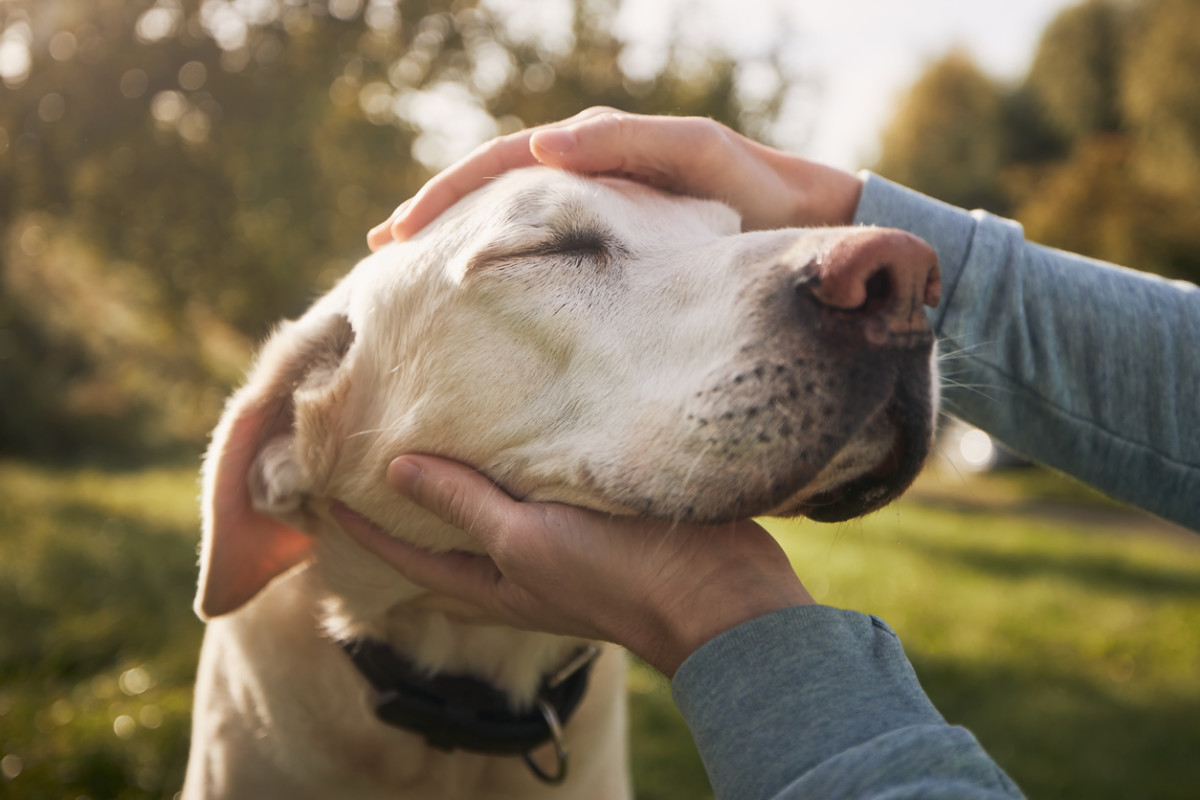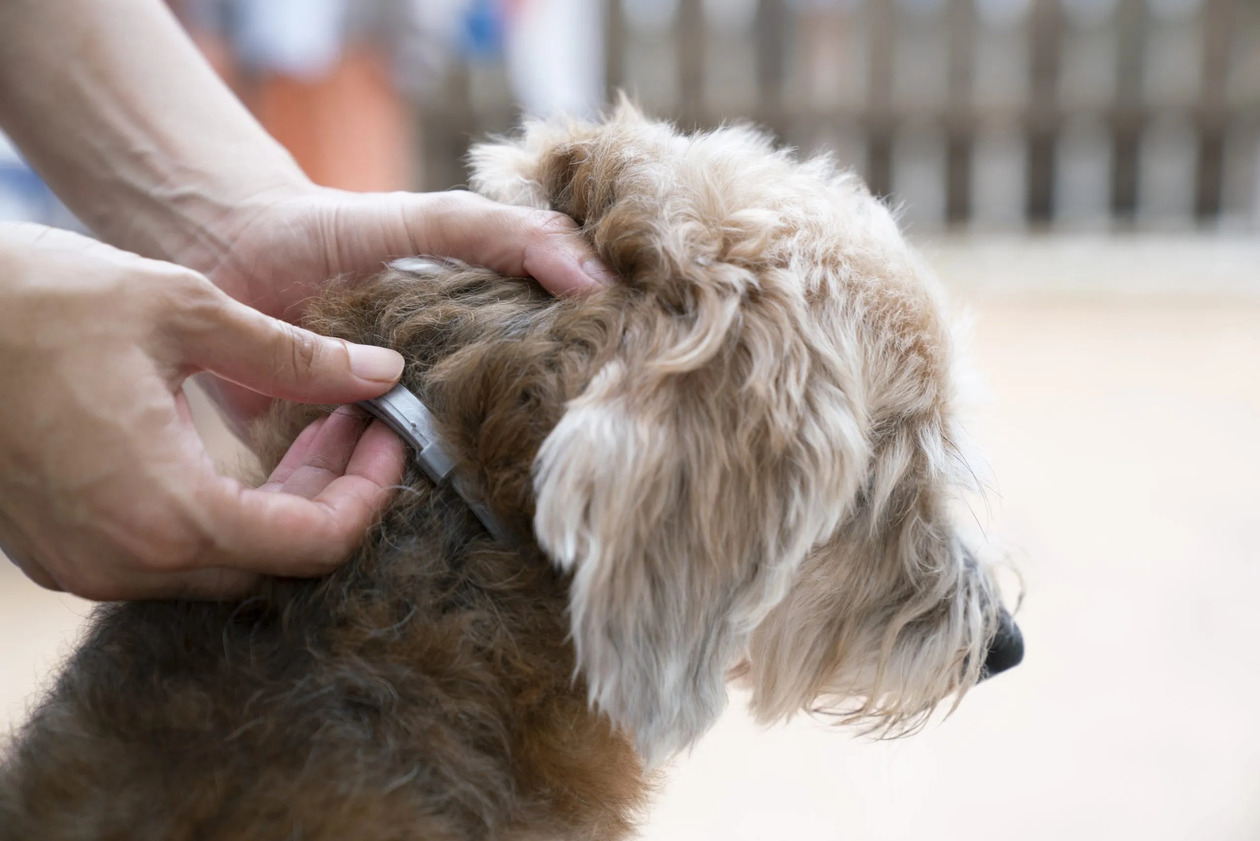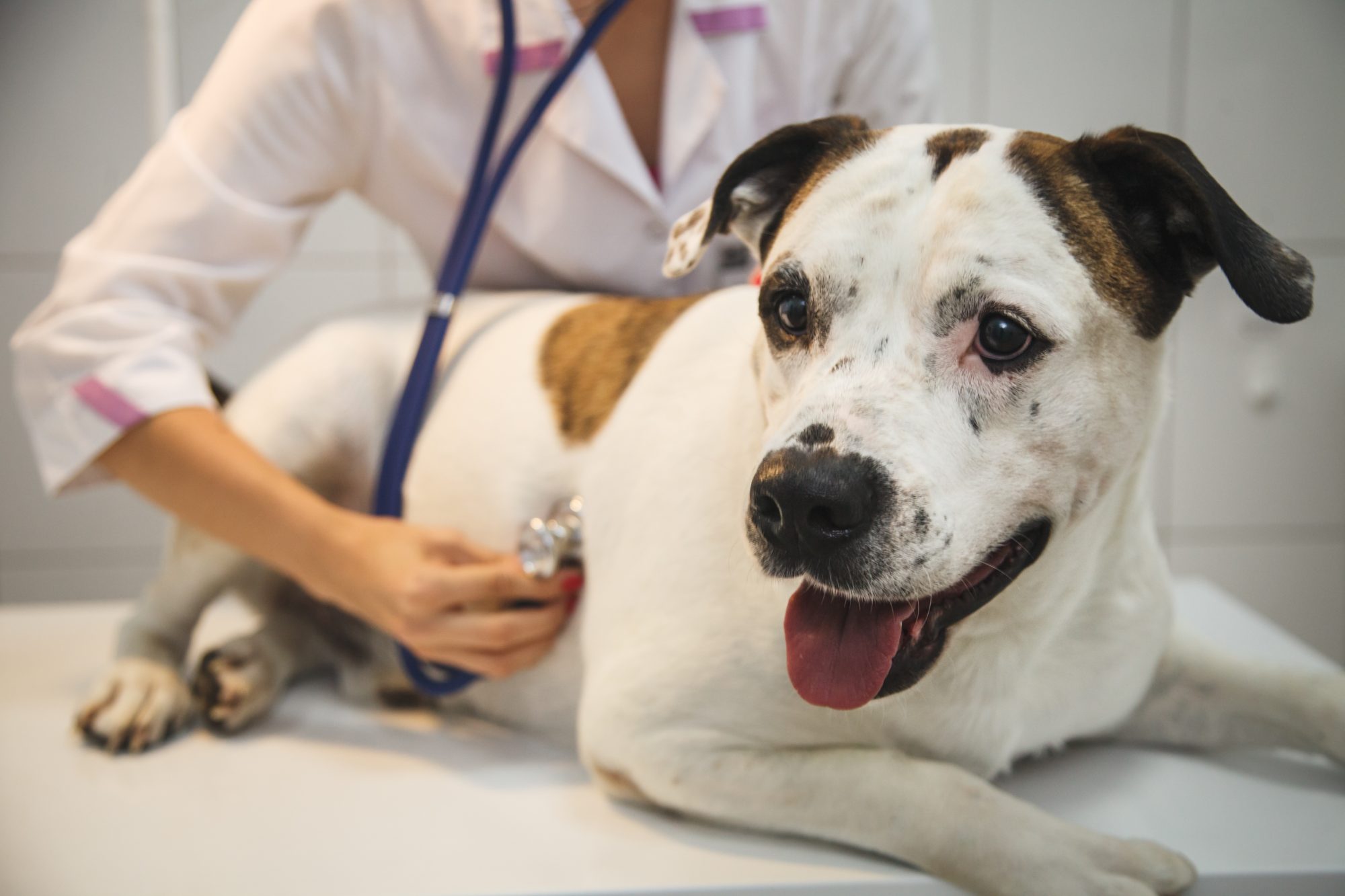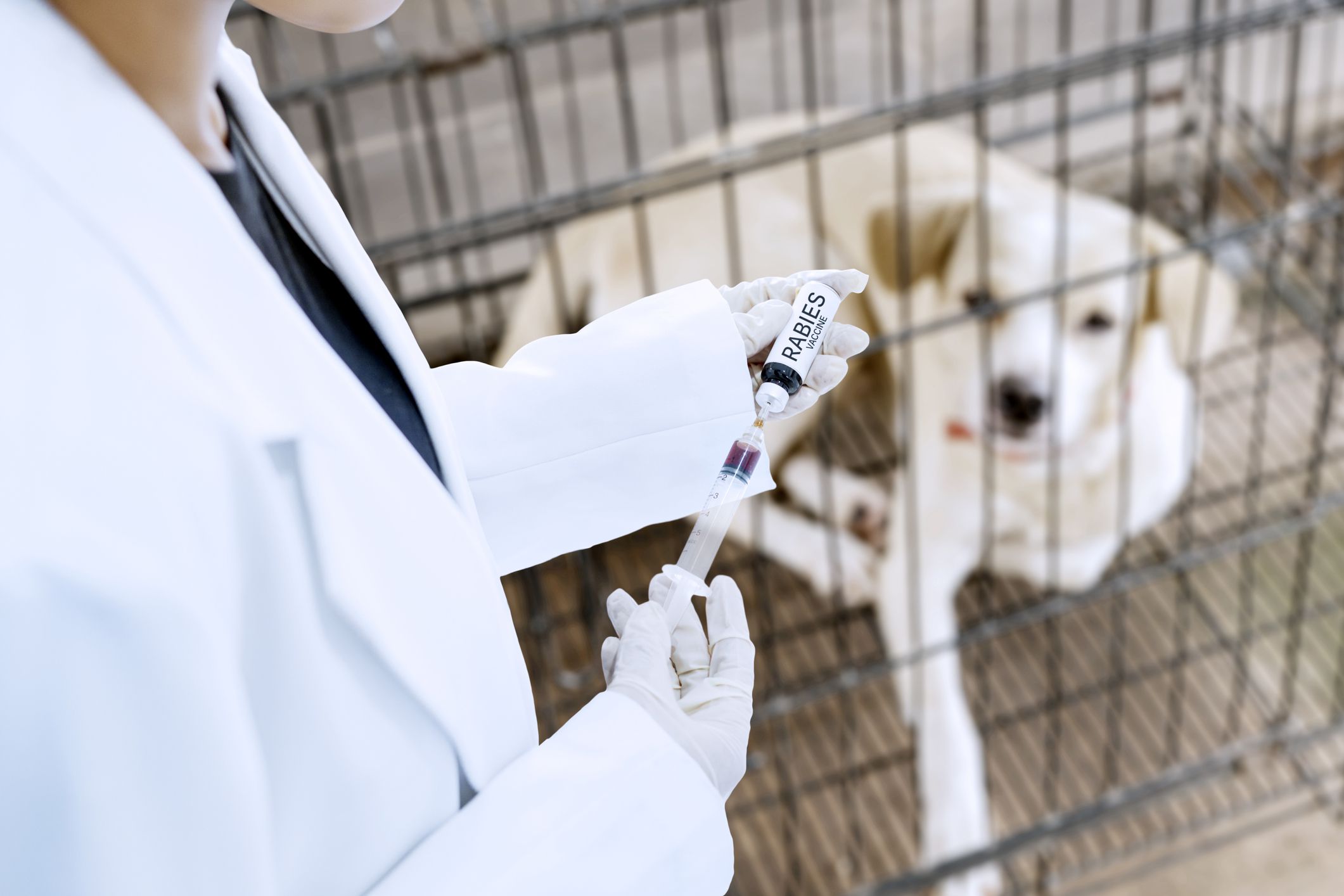Home>Health & Wellness>Common Health Issues>Muscular and Joint Health>How Long Before Arthritis Sets In Torn ACL Dogs


Muscular and Joint Health
How Long Before Arthritis Sets In Torn ACL Dogs
Modified: February 21, 2024
Ensure your dog's muscular and joint health after a torn ACL to prevent arthritis. Learn how long before arthritis sets in for dogs with a torn ACL.
(Many of the links in this article redirect to a specific reviewed product. Your purchase of these products through affiliate links helps to generate commission for Pawsomeoldies.com, at no extra cost. Learn more)
Table of Contents
Introduction
When our furry companions experience a torn ACL, it can be a challenging and distressing time for both the pet and their human family. The anterior cruciate ligament (ACL) is a crucial stabilizing ligament in the knee joint, and when it becomes torn, it can lead to pain, discomfort, and limited mobility for our beloved dogs. As responsible pet owners, it's essential to understand the implications of a torn ACL and its potential long-term effects, particularly its link to the development of arthritis.
The journey of a dog with a torn ACL can be fraught with uncertainty and concern. From the initial injury to the recovery process, pet owners often find themselves navigating a complex landscape of veterinary consultations, treatment options, and rehabilitation protocols. Amidst this challenging journey, it's crucial to be well-informed about the potential consequences of a torn ACL, including its association with the onset of arthritis in dogs.
Understanding the intricate relationship between a torn ACL and arthritis is pivotal in providing the best possible care for our canine companions. By delving into the factors influencing the development of arthritis in dogs with a torn ACL and exploring effective management strategies, we can empower ourselves to support our pets through their healing process and enhance their overall quality of life.
In the subsequent sections of this article, we will delve into the multifaceted aspects of torn ACL in dogs, unravel the connection between this injury and the development of arthritis, and elucidate the factors that can influence the onset of arthritis in dogs with a torn ACL. Furthermore, we will explore proactive measures and effective interventions for managing arthritis in dogs with a history of a torn ACL. By gaining a comprehensive understanding of these crucial elements, we can equip ourselves with the knowledge and insights necessary to provide optimal care for our furry friends.
Read more: How Long Can A Dog Live With Arthritis
Understanding Torn ACL in Dogs
A torn ACL, or anterior cruciate ligament, is a common orthopedic injury that affects dogs of various breeds and sizes. This vital ligament plays a pivotal role in stabilizing the knee joint, enabling smooth movement and weight-bearing activities. When the ACL becomes torn, it can lead to significant discomfort, lameness, and impaired mobility in dogs. The injury often occurs due to sudden twisting movements, excessive strain on the knee joint, or degenerative changes over time.
Symptoms of a torn ACL in dogs typically include limping, reluctance to bear weight on the affected leg, swelling around the knee joint, and difficulty rising or navigating stairs. Pet owners may observe their dogs favoring one leg over the other or displaying signs of pain when attempting to engage in physical activities.
Upon suspecting a torn ACL, prompt veterinary evaluation is crucial to confirm the diagnosis and determine the most appropriate course of action. Diagnostic procedures such as physical examinations, X-rays, and possibly advanced imaging techniques like MRI may be employed to assess the extent of the injury and identify any associated damage to the surrounding structures.
Treatment options for a torn ACL in dogs vary depending on the severity of the injury, the dog's size, age, and overall health. Conservative management may involve rest, restricted activity, and the use of anti-inflammatory medications to alleviate pain and reduce swelling. In cases of severe ACL tears or concurrent joint instability, surgical intervention such as TPLO (tibial plateau leveling osteotomy) or TTA (tibial tuberosity advancement) may be recommended to restore stability and function to the knee joint.
Rehabilitation and post-operative care are integral components of the recovery process for dogs with a torn ACL. Physical therapy, controlled exercise regimens, and weight management strategies can aid in promoting healing, rebuilding muscle strength, and preventing secondary complications.
By comprehending the nature of a torn ACL and its impact on dogs, pet owners can gain valuable insights into the challenges their furry companions may face. This understanding serves as a foundation for making informed decisions regarding treatment options, rehabilitation protocols, and long-term care, ultimately contributing to the well-being and comfort of dogs navigating the journey of ACL injury recovery.
The Link Between Torn ACL and Arthritis
The relationship between a torn ACL and the development of arthritis in dogs is a topic of significant concern and interest among pet owners and veterinary professionals. While the immediate focus may be on addressing the acute consequences of the ACL injury, it's crucial to recognize the potential long-term implications, particularly the heightened risk of arthritis in the affected joint.
The trauma inflicted upon the knee joint due to a torn ACL can trigger a cascade of physiological changes that predispose the joint to degenerative processes, ultimately contributing to the development of arthritis. The initial injury disrupts the structural integrity of the knee, leading to instability, abnormal loading patterns, and increased friction within the joint. These factors can accelerate the wear and tear of the articular cartilage, which serves as a protective cushion and facilitates smooth joint movement.
Furthermore, the inflammatory response elicited by the ACL injury can set the stage for ongoing joint inflammation, a hallmark feature of arthritis. The release of pro-inflammatory mediators and the activation of destructive enzymes within the joint can perpetuate tissue damage and compromise the overall health of the joint. Over time, this chronic inflammatory milieu can culminate in the progressive degeneration of the joint structures, heralding the onset of arthritis in dogs with a history of a torn ACL.
The altered biomechanics and compromised stability resulting from a torn ACL can also contribute to abnormal stress distribution within the joint, placing additional strain on the surrounding tissues and exacerbating the risk of arthritis. As the joint attempts to compensate for the loss of ligamentous support, it may undergo maladaptive changes that further compromise its resilience and predispose it to degenerative changes characteristic of arthritis.
It's important to note that the development of arthritis following a torn ACL is not inevitable, and proactive measures can be implemented to mitigate this risk. Effective management of the ACL injury, including appropriate surgical intervention, rehabilitation, and ongoing monitoring, can help minimize the likelihood of arthritis development. Additionally, strategies aimed at promoting joint health, such as weight management, nutritional support, and targeted exercise regimens, can play a pivotal role in safeguarding the affected joint from the ravages of arthritis.
By recognizing the intricate interplay between a torn ACL and the potential onset of arthritis, pet owners and veterinary professionals can adopt a proactive and holistic approach to the care of dogs recovering from this injury. Through diligent monitoring, early intervention, and comprehensive joint support, the risk of arthritis can be mitigated, fostering enhanced well-being and mobility for our beloved canine companions.
Factors Affecting the Onset of Arthritis in Dogs with Torn ACL
The onset and progression of arthritis in dogs with a torn ACL are influenced by a myriad of factors that collectively shape the joint's long-term health and resilience. Understanding these influential elements is pivotal in devising comprehensive strategies to mitigate the risk of arthritis and promote optimal joint function in canine companions recovering from a torn ACL.
1. Severity and Chronicity of the ACL Injury
The extent of the ACL injury and the duration of its presence can significantly impact the likelihood of arthritis development. Severe and longstanding ACL tears can inflict substantial damage to the joint structures, leading to persistent instability, abnormal loading patterns, and heightened inflammatory responses. These factors can expedite the degenerative processes within the joint, increasing the susceptibility to arthritis.
2. Surgical Intervention and Post-Operative Care
The type of surgical intervention employed to address the torn ACL, as well as the quality of post-operative care and rehabilitation, play a crucial role in shaping the joint's long-term health. Well-executed surgical procedures aimed at restoring stability and function to the knee joint can mitigate the risk of arthritis by addressing the underlying structural abnormalities. Additionally, diligent post-operative care, including controlled exercise regimens and physical therapy, can promote optimal healing and reduce the likelihood of secondary complications that may predispose the joint to arthritis.
3. Body Weight and Nutritional Status
The body weight of the affected dog and its nutritional status exert a profound influence on the joint's susceptibility to arthritis. Excessive body weight places undue stress on the compromised joint, accelerating the wear and tear of the articular surfaces and exacerbating the risk of arthritis. Furthermore, nutritional deficiencies or imbalances can compromise the joint's resilience and impede its capacity for repair and maintenance, potentially hastening the onset of arthritis.
4. Joint Support and Rehabilitation
The implementation of targeted joint support measures and rehabilitation protocols can significantly impact the joint's long-term health following a torn ACL. Physical therapy, controlled exercise regimens, and modalities aimed at promoting muscle strength and joint stability can mitigate the risk of arthritis by fostering optimal joint function and resilience. Additionally, the use of joint supplements containing chondroprotective agents such as glucosamine and chondroitin can support the joint's structural integrity and mitigate the progression of degenerative changes.
5. Underlying Joint Health and Genetic Factors
The pre-existing health of the affected joint and genetic predispositions can influence the trajectory of arthritis development following a torn ACL. Dogs with underlying joint conditions or genetic susceptibilities to orthopedic disorders may exhibit heightened vulnerability to arthritis in the aftermath of an ACL injury. Understanding these inherent factors can inform tailored interventions aimed at bolstering the joint's resilience and mitigating the impact of genetic predispositions on arthritis development.
By comprehensively addressing these influential factors, pet owners and veterinary professionals can adopt a proactive and holistic approach to the care of dogs recovering from a torn ACL. Through diligent monitoring, targeted interventions, and comprehensive joint support, the risk of arthritis can be mitigated, fostering enhanced well-being and mobility for our beloved canine companions.
Read more: How Long Do Arthritis Flare-Ups Last In Dogs
Managing Arthritis in Dogs with Torn ACL
The management of arthritis in dogs with a history of a torn ACL encompasses a multifaceted approach aimed at alleviating discomfort, promoting joint health, and enhancing overall mobility and quality of life. As dogs recovering from a torn ACL are inherently predisposed to the development of arthritis, proactive measures are essential to mitigate the impact of degenerative changes and foster optimal joint function.
1. Pain Management
Effective pain management is a cornerstone of arthritis care in dogs with a torn ACL. Non-steroidal anti-inflammatory drugs (NSAIDs) may be prescribed to alleviate pain and reduce joint inflammation. Additionally, alternative modalities such as acupuncture, cold laser therapy, and physical modalities like therapeutic ultrasound can complement pharmacological interventions, providing holistic pain relief and enhancing the dog's comfort.
2. Weight Management
Maintaining an optimal body weight is crucial in managing arthritis in dogs with a history of a torn ACL. Excessive body weight places undue stress on the affected joint, exacerbating the degenerative processes and impeding mobility. A tailored nutrition plan, incorporating a balanced diet and portion control, can support weight management efforts and alleviate the burden on the arthritic joint, promoting enhanced mobility and joint health.
3. Joint Supplements
The use of joint supplements containing chondroprotective agents such as glucosamine, chondroitin, and omega-3 fatty acids can play a pivotal role in supporting joint health and mitigating the progression of arthritis. These supplements aid in preserving the integrity of the articular cartilage, reducing inflammation within the joint, and promoting optimal joint lubrication, ultimately enhancing the dog's comfort and mobility.
4. Physical Therapy and Exercise Regimens
Structured physical therapy regimens and targeted exercise protocols are integral components of arthritis management in dogs with a torn ACL. These interventions aim to promote muscle strength, joint stability, and flexibility, thereby enhancing the dog's ability to navigate daily activities and maintain optimal mobility. Under the guidance of a veterinary rehabilitation specialist, tailored exercise regimens can aid in preserving joint function and mitigating the impact of arthritis.
5. Environmental Modifications
Adapting the dog's living environment to accommodate their mobility challenges is essential in managing arthritis. Providing supportive bedding, ramps or steps for accessing elevated surfaces, and minimizing slippery surfaces can reduce the strain on arthritic joints and enhance the dog's ability to move comfortably within their surroundings.
6. Ongoing Monitoring and Veterinary Care
Regular veterinary evaluations and monitoring are crucial in managing arthritis in dogs with a history of a torn ACL. Periodic assessments enable early detection of disease progression, adjustments to the treatment plan, and the implementation of additional interventions as needed. Furthermore, veterinary guidance ensures that the dog's care plan remains tailored to their evolving needs, optimizing their comfort and well-being.
By integrating these comprehensive strategies into the care of dogs with a torn ACL, pet owners can effectively manage arthritis, mitigate discomfort, and enhance the overall quality of life for their beloved canine companions. This proactive and holistic approach not only addresses the immediate challenges posed by arthritis but also fosters enduring joint health and mobility, empowering dogs to lead fulfilling and comfortable lives despite the lingering effects of a torn ACL.
Conclusion
In conclusion, the journey of a dog with a torn ACL encompasses a spectrum of challenges, from the initial injury and recovery process to the potential long-term implications, including the heightened risk of arthritis. The intricate relationship between a torn ACL and the development of arthritis underscores the importance of proactive and holistic care to safeguard the joint health and overall well-being of our canine companions.
By understanding the multifaceted impact of a torn ACL on the affected joint, pet owners and veterinary professionals can navigate the complexities of this orthopedic injury with informed awareness and strategic interventions. The link between a torn ACL and arthritis underscores the need for comprehensive management strategies that encompass pain relief, joint support, weight management, and targeted rehabilitation.
Moreover, recognizing the influential factors that can shape the trajectory of arthritis development in dogs with a torn ACL empowers pet owners and veterinary professionals to implement tailored interventions that mitigate the risk of degenerative changes and promote optimal joint function. Factors such as the severity of the ACL injury, surgical intervention, body weight, joint support, and genetic predispositions collectively influence the joint's long-term health, highlighting the significance of a personalized and proactive approach to care.
The management of arthritis in dogs with a history of a torn ACL necessitates a multifaceted strategy that encompasses pain management, weight control, joint supplements, physical therapy, environmental modifications, and ongoing veterinary monitoring. By integrating these comprehensive measures into the care plan, pet owners can effectively mitigate the impact of arthritis, alleviate discomfort, and enhance the overall quality of life for their beloved canine companions.
Ultimately, the journey of a dog with a torn ACL is one that demands diligence, compassion, and a commitment to proactive care. By embracing a proactive and holistic approach to managing the implications of a torn ACL, pet owners can empower their furry companions to thrive despite the challenges posed by this orthopedic injury. Through informed awareness, strategic interventions, and unwavering dedication, we can ensure that dogs with a history of a torn ACL lead fulfilling, comfortable, and active lives, free from the constraints of arthritis and its associated limitations.












